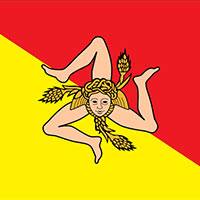Monreale
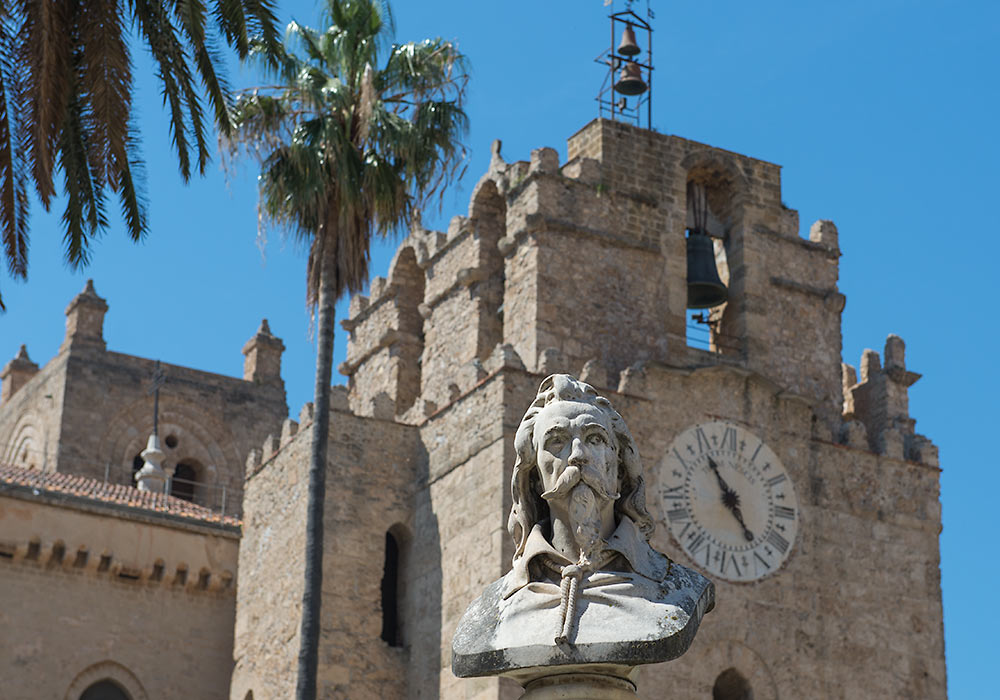
Bust of the painter Pietro Novelli in front of the bell tower of the cathedral in Monreale, Palermo.
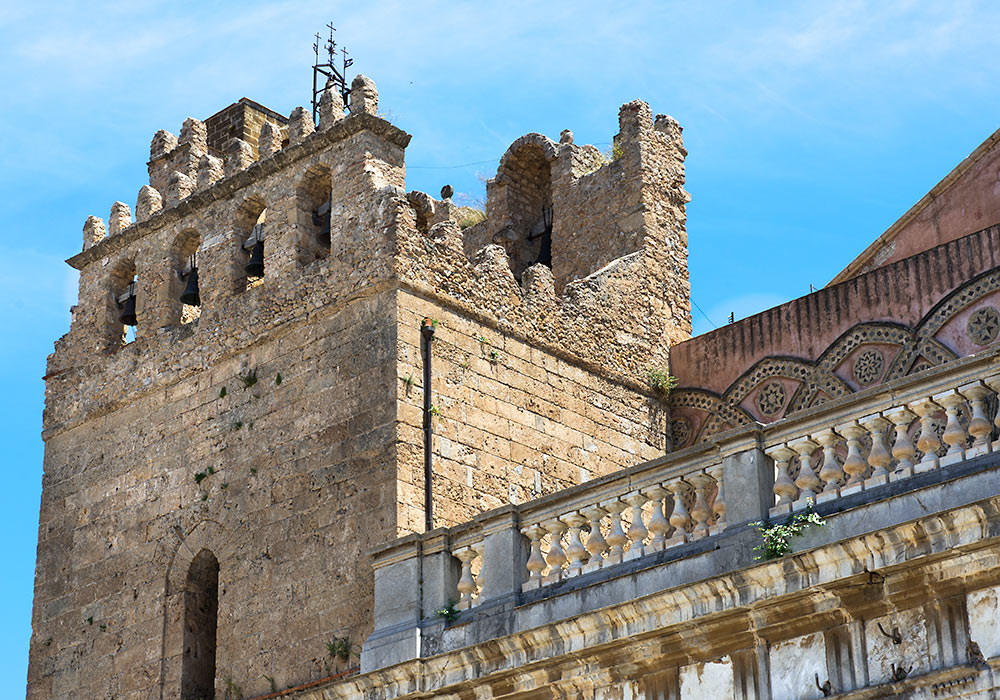
The Cathedral in Monreale, Palermo (detail).
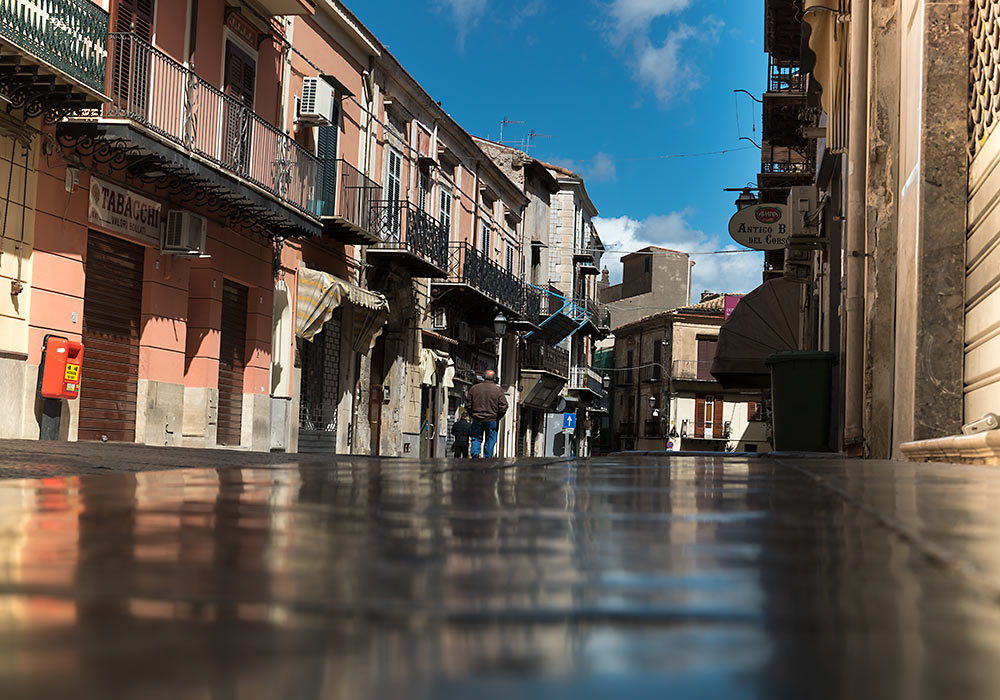
A quiet street in Monreale.
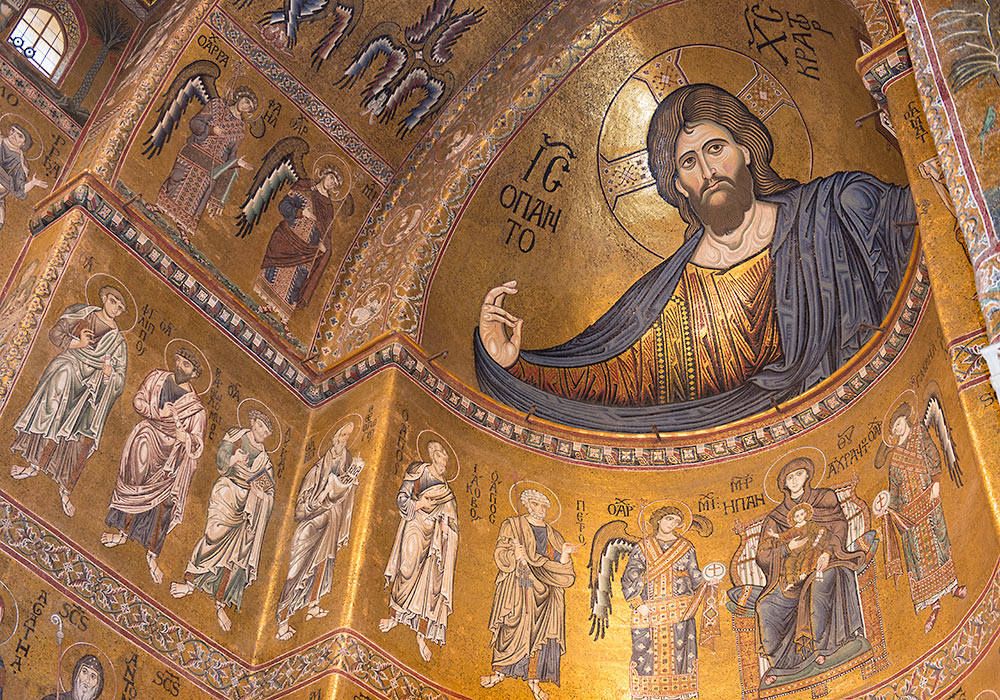
Photo: Per-Erik Skramstad / Wonders of Sicily
Christ Pantocrator: The cathedral in Monreale, Palermo, is regarded as the most beautiful of the Norman churches in Sicily. The mosaics were made with 2200 kg of pure gold, experts have estimated. Craftsmen from Constantinople were employed to expedite the work. The Byzantine mosaics are among the most magnificent in the world.
The most common translation of Pantocrator is "Almighty" or "All-powerful". In this understanding, Pantokrator is a compound word formed from the Greek words πᾶν, pan (gen. pantos), i.e. "all" and κράτος, kratos, i.e. "strength", "might", "power". This is often understood in terms of potential power; i.e., ability to do anything, omnipotence. Another, more literal translation is "Ruler of All" or, less literally, "Sustainer of the World". In this understanding, Pantokrator is a compound word formed from the Greek for "all" and the verb meaning "To accomplish something" or "to sustain something" (κρατεω). This translation speaks more to God's actual power; i.e., God does everything (as opposed to God can do everything).
Latin inscription over a water source
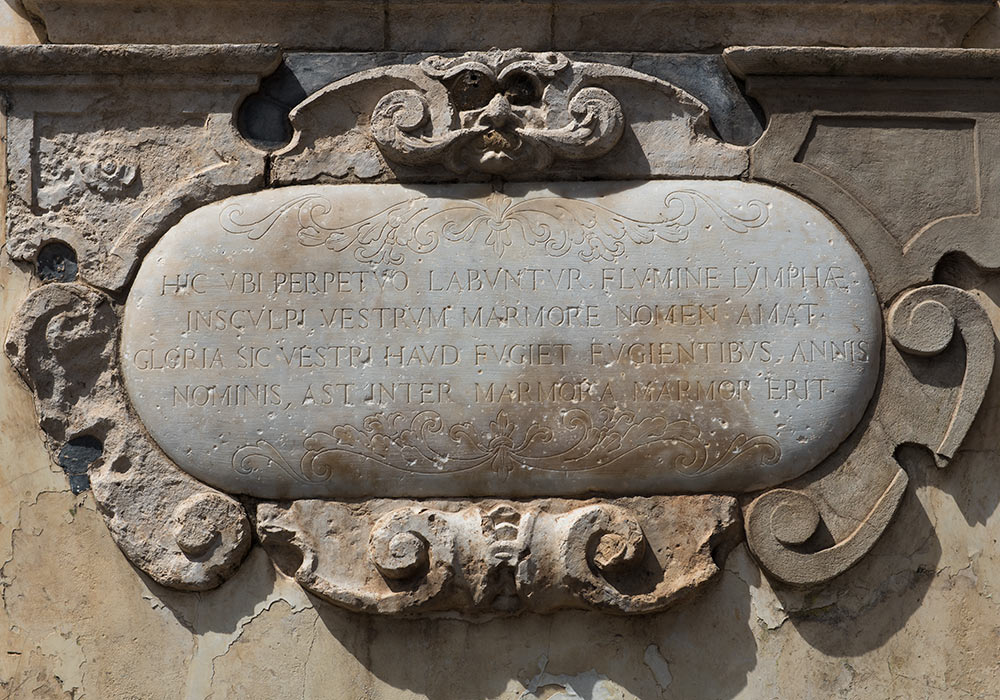
Latin inscription over a water source in Monreale. The text reads: "Hic ubi perpetuo labuntur flumine lymphae insculpi vestrum marmore nomen amat gloria sic vestri haud fugiet fugientibus annis nominis, ast inter marmora marmor erit", which Google translates rather nonsensical as "This slip stream of water where ever you are stamped with the name of marble loves you so much glory years of the fugitives flee, but among the marble marbles".
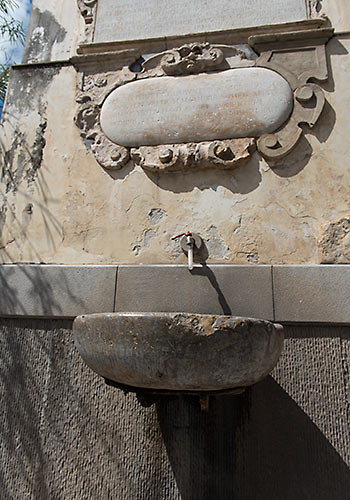
The water source with the latin inscription, Monreale. (See detail above.)
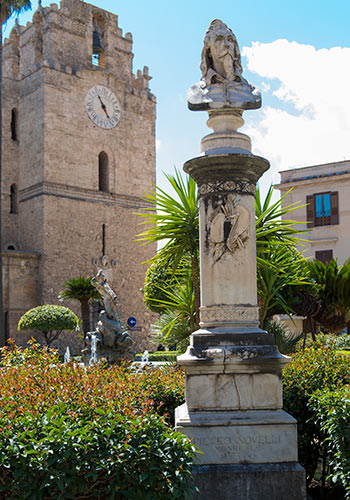
Statue of the painter Pietro Novelli outside the cathedral. Pietro Novelli (1603–1647) was born in Monreale, and was active mainly in Palermo. Novelli is also known as il Monrealese or Pietro "Malta" Novelli. He was also nicknamed by contemporaries as the Raphael of Sicily. Novelli was a member of the Compagnia di S. Maria del Rosario delli Sacchi (see Oratorio del SS. Rosario di San Domenico) and painted several in the Oratory perhaps more known for the stuccoes of Giacomo Serpotta.
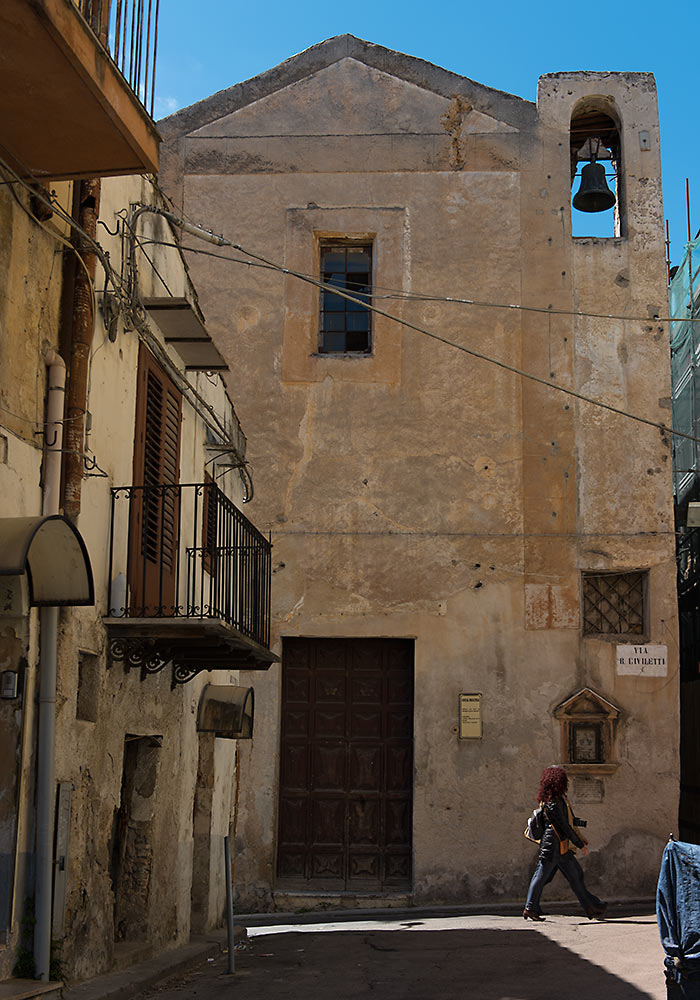
Chiesa Odigitria (Via B Civiletti) was built by Greek-Albanian immigrants in 1596. The church has a frescoed ceiling by Pietro Novelli and stuccoes by Giacomo Serpotta.
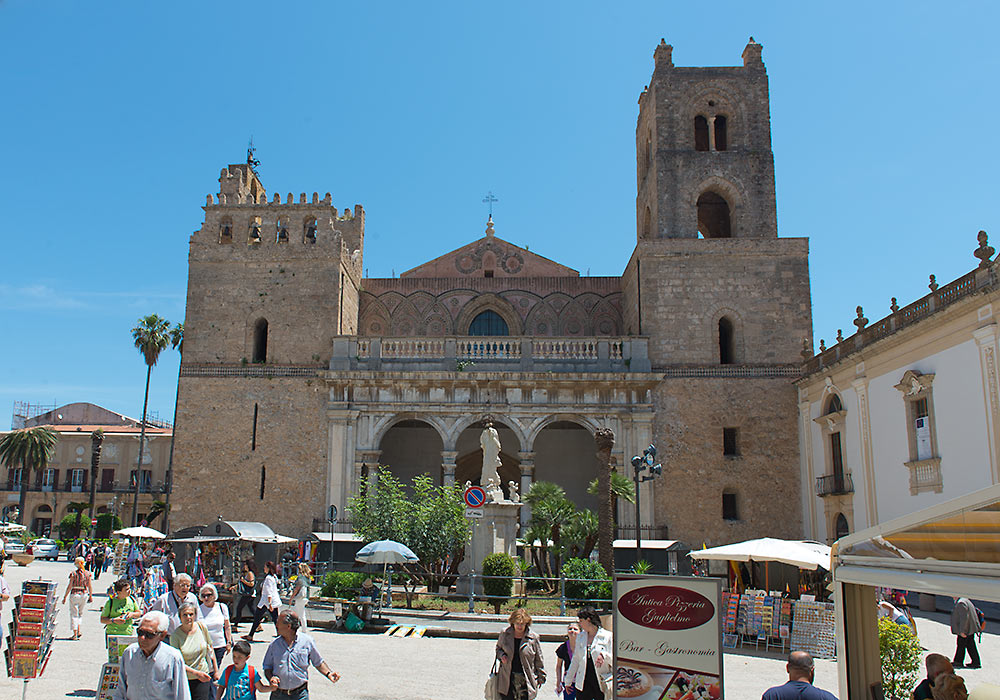
The cathedral in Monreale marks the high point of the marriage between Norman Romanesque Architecture and Byzantine craftsmanship.
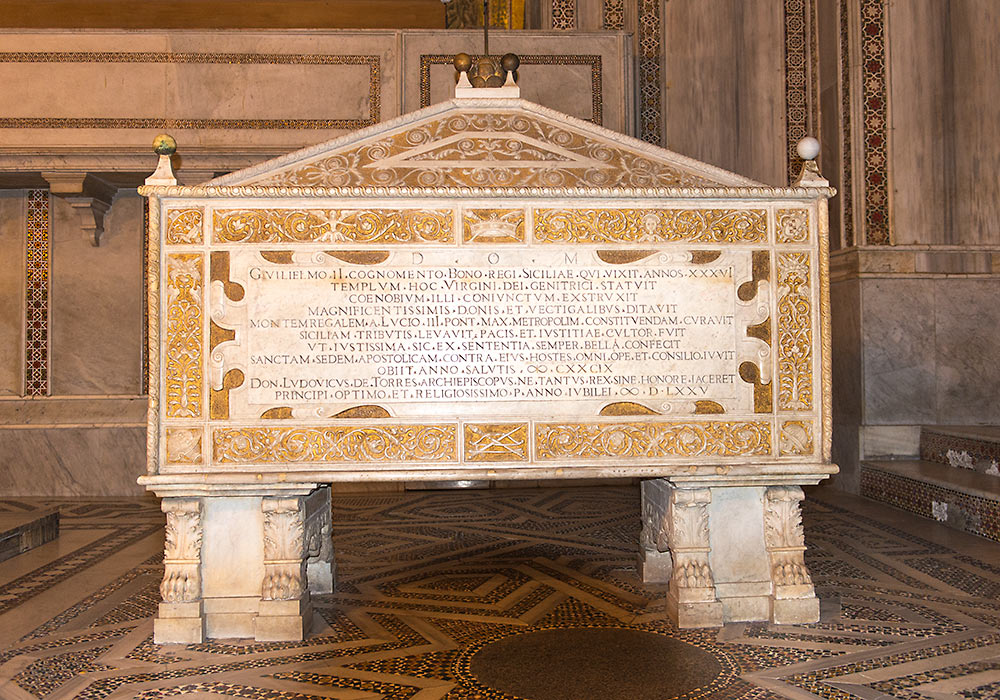
The Normans in South Italy
999–1017 Arrival of the Normans in Italy
1009–1022 Lombard revolt
1022–1046 Mercenary service
1046–1059 County of Melfi
1049–1098 County of Aversa
1053–1105 Conquest of the Abruzzo
1061–1091 Conquest of Sicily
1073–1077 Conquest of Amalfi and Salerno
1059–1085 Byzantine-Norman wars
1077–1139 Conquest of Naples
1091: The county of Ragusa was founded in 1091 by Count Roger for his son, Godfrey.
1095: 22 December Roger II is born
1105: Roger II is named Count of Sicily
1127: Roger II becomes Duke of Apulia and Calabria
1130: Roger II becomes King of Sicily
1130s Cappella Palatina: Commenced by Roger II
1131 Building of the cathedral in Cefalù begins (Roger II)
1140 Cappella Palatina is consecrated.
c1140-c1147 The painted wooded ceiling in Cappella Palatina was completed
1143–1151 The mosaics in La Martorana (Santa Maria dell'Ammiraglio) was made
1154: 26 February Roger II dies and William I becomes King of Sicily
1154-1166: The mosaics of the central nave of the Cefalù Cathedral and the nave and aisles of the Palatine Chapel (Cappella Palatina) were most likely made during the rule of William I
1160-70 c. Sala di Ruggero (King Roger's Room) in the Norman Palace is made
1166: 7 May King William I dies in Palermo
1174–1189 The cathedral in Monreale is built (King William II)
1194 Sicily falls into the hands of the Germanic Hohenstaufen dynasty
Facts about Palermo
- In 1500 the population in Palermo was approximately one million!
- When the Normans ruled over Sicily, there was around 300 mosques in Palermo.
- Boccaccio's Decameron Fifth Day - Novel VI takes place in the Cuba, Palermo (commissioned in 1180 by William II)
- The opera composer Richard Wagner finished his last work Parsifal in Palermo. In 1881–1882 he stayed with his family in Sicily.
- The population (2013) in Palermo is 654,858 (city) 1,200,000 (metro).
- Gebel Grin is what the Arabs called Monte Pellegrino, Palermo.

